Manuscripts Etc.
| CLOSE WINDOW |

|
The following items are drawn from the William Faulkner Foundation Collection at the University of Virginia's Albert and Shirley Small Special Collections Library (http://small.library.virginia.edu/).
|
|
In the Faulkner Foundation Collection are three items related to "Fool About a Horse": Faulkner's 10-page manuscript, an incomplete ribbon typescript (pages 2-19, 23, 28-29), and a complete carbon copy (pages 1-33) of that typescript. Faulkner made a number of small changes as he typed the manuscript, and then made a few handwritten corrections on the ribbon typescript, and much later a few more on pages 23-28 of the carbon copy, but otherwise all three of these documents tell the same story. That story, however, is dramatically different from the published "Fool About a Horse." Below: the first two manuscript pages, probably written in 1935. 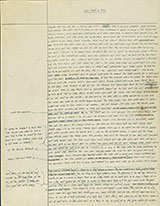 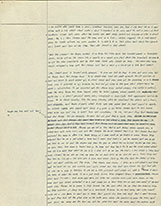 As you can see in the manuscript, Faulkner originally chose to frame his tale of a mock-epic horse swap between a poor-white farmer and a pair of legendary horse-traders with a narrator who is never named but is almost certainly Quentin Compson, who also narrates, in very different ways, the longest section of The Sound and the Fury as well as the short stories "That Evening Sun," "A Justice" and "Lion," and provides the narrative center for the 1936 novel Absalom, Absalom! Within this frame is the oral tale told by the farmer's son, in his own country vernacular. In both the manuscript and typescript versions of the story, the farmer's son is named "Suratt" - the character V.K. Suratt whom Faulkner had introduced in Flags in the Dust and who figures in six novels and four other short stories under that name and as V.K. Ratliff. In the published story, Quentin is gone along with the frame. The story launches directly into its first-person vernacular tale about how "[Mammy] and Pat jest used Pap to trade through"; the story-teller still remains the farmer's son, but neither he nor his father is given a name. Nor in this later version is there any description of the audience to whom he is telling the story. Much of the original version, however, sets up that performative context in considerable detail: it takes place in town, inside a law office where a Negro servant named Roskus silently pulls the cord of a punkah fan to cool the white men in the room; besides the story-teller, they are Quentin, his "Grandfather" (also called "General"), and Doc Peabody, all members of Yoknapatawpha's aristocracy. Both Faulkner's use of Quentin here and the way his narrative frame implicitly stages the issue of class make this first version very worth reading. The ten pages below are from the typescript (the first below left is from the carbon copy, replacing the missing first page of the ribbon typescript). The remaining 23 pages of this typescript, except for four short exchanges between story-teller and listeners, tell essentially the story that you can read in Joseph Blotner's Uncollected Stories.    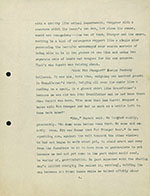 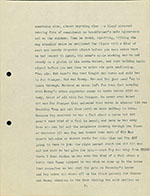 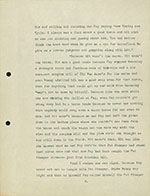 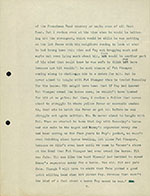 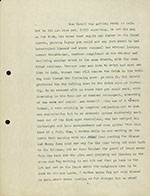 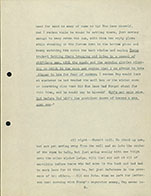  As with the other short stories that "Quentin" narrates, the way Faulkner uses this character here is confusing – this Quentin is clearly alive after 1930, two decades after he dies in The Sound and the Fury. This inconsistency may be one reason why Faulkner chose to discard the frame entirely, though Blotner speculates that Faulkner rewrote "Fool About a Horse" after it was rejected by the Saturday Evening Post, to make it acceptable to Scribner's, the magazine that published it in 1936. Neither a manuscript nor a typescript of the printed version exists. The changes Faulkner made on pages 23-28 of the carbon – crossing out a parenthetical exchange between Suratt and Peabody in the office; changing Pap's name to "Ab" – were made a few years later, as part of the process by which Faulkner substantially revised the Scribner's version for inclusion in his novel The Hamlet (1940). Pap (Lum Suratt) becomes Ab Snopes, the story-teller is re-named Ratliff, a young neighbor of the farmer rather than his son, and now he tells the story on the front porch of Mrs. Littlejohn's boarding house in Frenchman's Bend, to an audience that consists of five or six country men from the neighborhood. The horse traders still play the same tricks on each other, but it's interesting to think how the story itself plays differently in the two different settings, an office in town or a porch in the county. Citing this source:
|
